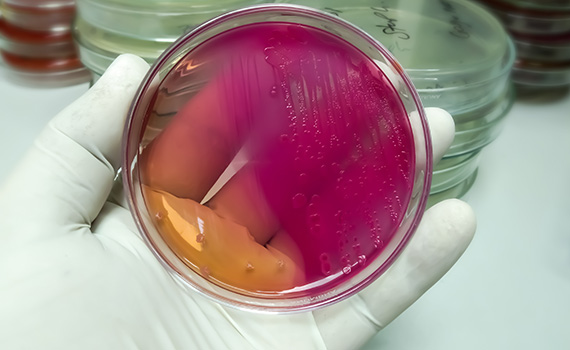E. coli implicated in layer gut disease
Escherichia coli (E.coli) may be largely responsible for focal duodenel necrosis (FDN) in layer chickens, according to researchers at the University of Georgia.
FDN — also known as multifocal ulcerative duodenitis or “gray gut” — is considered one of the top-five diseases in the table-egg layer industry but is not well understood.
First described in the late 1990s, the etiology of FDN has not been identified, but some research has identified Clostridium colinum and Clostridium perfringens from FDN samples as potential actors in the disease.
UGA scientists, led by Yu-Yang Tsai with the Poultry Diagnostic and Research Center, Department of Population Health, aimed to identify the Gram-negative filamentous bacteria commonly found in association with FDN lesions.
For their study, they collected 59 ethanol-fixed duodenum samples from eight different FDN-affected farms and observed FDN lesions in 42 duodenum samples.
Cutting-edge techniques
Using genomic techniques, investigators determined that preliminary results suggest that E. coli represents a large proportion of the microbial composition, followed by Enterococcus faecalis and Acinetobacter spp.
On gross lesion analysis, they found focal to multifocal erosions in duodenum tissues consistent with FDN. Microscopic analysis of the lesions showed heterophilic and lymphoplasmacytic enteritis with loss of enterocytes at the villous tips, luminal fibrinonecrotic exudate and variable numbers of filamentous bacteria, the researchers noted.
“Further virulence gene analysis by PCR (polymerase chain reaction) found 70.2% of isolates examined possessed avian pathogenic E. coli virulence genes, and 93.6% possessed inflammatory bowel disease virulent determents,” the researchers reported.
They also collected an additional 20 fresh duodenum samples from one FDN-affected farm. Of those samples, 10 had FDN microscopic lesions, and the researchers isolated a total of 47 colonies, including 31 aerobic colonies and 16 anaerobic colonies.
Through 16S rRNA gene PCR and Sanger sequencing, they identified 39 colonies as E. coli, three as Staphylococcus and five were unidentified.
The research provides important new information about FDN and its association with E.coli.
For more on this study, see the 2022 IPSF proceedings (abstract M51, page 17).
Posted on October 27, 2022

















